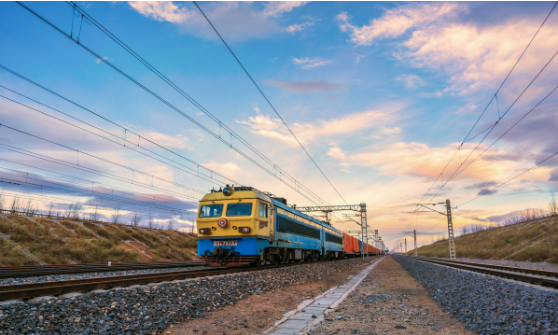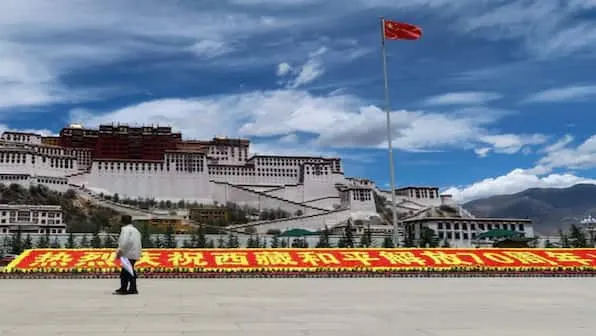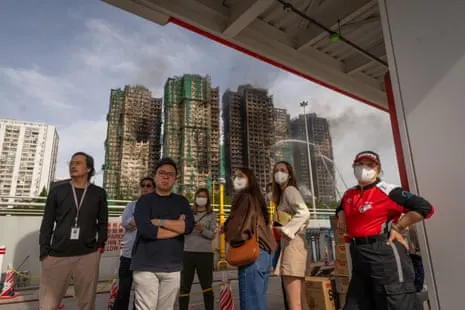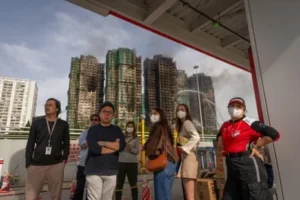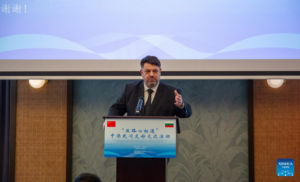75 years of change: China’s opening up reaches unprecedented levels
October 1, 2024 marks the 75th anniversary of the founding of the People’s Republic of China. Over the past 75 years, under the strong leadership of the Communist Party of China, the country has made remarkable progress in social and economic development. From a once backward agrarian society, China has transformed itself into the world’s second-largest economy, increasingly interconnected with the global economy and offering significant opportunities to the rest of the world. To highlight this, the Global Times is launching a series of articles, with this installment focusing on China’s ongoing efforts to open up to the world.
The China-Europe freight trains now pass daily through Alashankou Port in Northwest China’s Xinjiang Uygur Autonomous Region, becoming the new “steel camels” of the China-proposed Belt and Road Initiative (BRI), a modern evolution that takes on and carries forward the spirit of the ancient Silk Roads that originated 2,000 years ago.
The spirit of openness is ingrained in China’s identity, and today, this openness continues to thrive.
Over the past 75 years since the founding of the People’s Republic of China (PRC) in 1949, particularly since the reform and opening-up in 1978, China has diligently pursued a unique path of all-dimensional opening-up that reflects the distinct Chinese characteristics.
By actively engaging in international economic cooperation and competition, China has made a remarkable transition to become an economy that embraces comprehensive openness. This evolution has deepened foreign economic and trade collaborations while significantly raising the standards of institutional opening-up. Embracing this trajectory is essential for both national growth and global integration.
China’s pursuit of opening-up has enabled Xinjiang, an inland area in Northwest China, to become a modern gateway and a frontier of opening-up to the outside world.
Building transport hubs
At present, more than 120 China-Europe freight train routes pass through Alashankou Port. Thanks to the railway construction and the upgrading international cooperation, small border towns like Alashankou and Horgos in Xinjiang have transformed into key transport hubs and “golden corridors” under the BRI.
“After the goods arrive at the land port area in Urumqi [regional capital of the Xinjiang region], merchants can complete the assembly and related formalities within 24 hours and the products will be sent to Horgos Port or Alashankou Port for exports,” Ma Yun, an official from China Railway Urumqi Group, told the Global Times. “Previously, this process took three to five days.”
The story of Xinjiang was only one of the most recent examples of China’s opening-up efforts. In fact, China’s opening-up has gradually expanded from the country’s southeastern coastal regions to its central and northwestern inland regions. In order to improve a new open economic ecosystem, China has created 22 pilot free trade zones at various stages, creating a new pattern of reform and opening-up that coordinates its coastal, inland and border areas.
Shenzhen, South China’s Guangdong Province, is a pioneering city in China’s reform and opening-up. It developed from a small fishing village to today’s technology hub and a modern metropolis. The city’s exports and imports account for one-tenth of China’s total foreign trade, customs data showed.
Yiwu in East China’s Zhejiang Province provides 2.1 million different types of products for the world, and about 28 million express deliveries fly from here to all over the world every day, according to media reports.
Such efficiency should be attributed largely to the convenient logistics through railways.
For example, a road sign at the East London train station says: “Yiwu 12,000 km,” which indicates the Yiwu-London route, opened in January 2017, under the Yixin’ou China-Europe Railway Express.
This year marks the 10th anniversary of Yixin’ou China-Europe Railway Express, which starts from Yiwu and links destinations of more than 160 cities in over 50 countries and regions. So far in 2024, the number of Yixin’ou routes amounted to 20, according to statistics from Yixin’ou, which literally means Yiwu-Xinjinag-Europe.
The freight railways also allow cargo to be shipped directly to seaports like Zhejiang’s Ningbo-Zhoushan Port, reducing time and costs compared to road transport.
Yu Feng, a manager at a Yiwu-based logistics company, told the Global Times that the rail-sea multimodal transport has greatly reduced transport time and costs, which enabled more goods exports and imports.
Improved transport infrastructure and streamlined logistics have boosted China’s foreign trade nationwide. The trade in goods has experienced an extraordinary surge, skyrocketing from $1.13 billion in 1950 to a staggering $5.9 trillion in 2023, according to customs data.
The achievement was made step by step and through hard work. In the early days of the PRC’s founding in 1949, the country’s productive forces were backward and the economic foundation was weak. Against the backdrop of the economic blockade of some Western countries, China’s foreign trade in goods was in a closed or semi-closed state.
From the 1950s to the 1960s, the scale of China’s trade in goods expanded with an average annual growth rate of 6.9 percent. In the 1970s, as positive changes took place in the international environment, China resumed its legitimate seat in the United Nations, and its foreign trade developed rapidly. The total import and export of goods increased from $4.59 billion in 1970 to $20.6 billion in 1978.
Furthermore, China witnessed remarkable growth in the share of total goods imports and exports within the global market – rising from a mere 1 percent in 1978 to an impressive 12.4 percent by 2023.
Providing platforms
China has become a major trading partner of more than 150 countries and regions and it has strived to share its development opportunities with the entire world.
The Resolution of the Central Committee of the Communist Party of China on Further Deepening Reform Comprehensively to Advance Chinese Modernization, published on July 21 following the conclusion of the third plenary session of the 20th Central Committee of the Communist Party of China, underscored China’s unwavering commitment to its fundamental national policy of opening up to the outside world, emphasizing that the country will persist in advancing reform through this process of opening-up.
By leveraging the advantages offered by its vast market, China intends to bolster its capabilities in fostering openness, while simultaneously broadening international collaboration and establishing new frameworks aimed at developing a more sophisticated open economy.
China’s economic experience over the past four decades demonstrates that opening-up has turned out to be essential to the country’s development. And the country is always ready to share opportunities with other economies, Pan Helin, a Beijing-based veteran economist, told the Global Times.
“In the face of skepticism from some Western countries, China continues to deepen cooperation with countries around the world on a larger scale, represented by the BRI,” Wan Zhe, an economist and professor at the Belt and Road School of Beijing Normal University, told the Global Times.
Apart from the platform of BRI, China has provided a series of state-level “expo matrices,” such as the China International Import Expo, China International Fair for Trade in Services and the China International Supply Chain Expo. These expos have evolved into mutually beneficial platforms, fostering expanded openness and deepening international cooperation.
